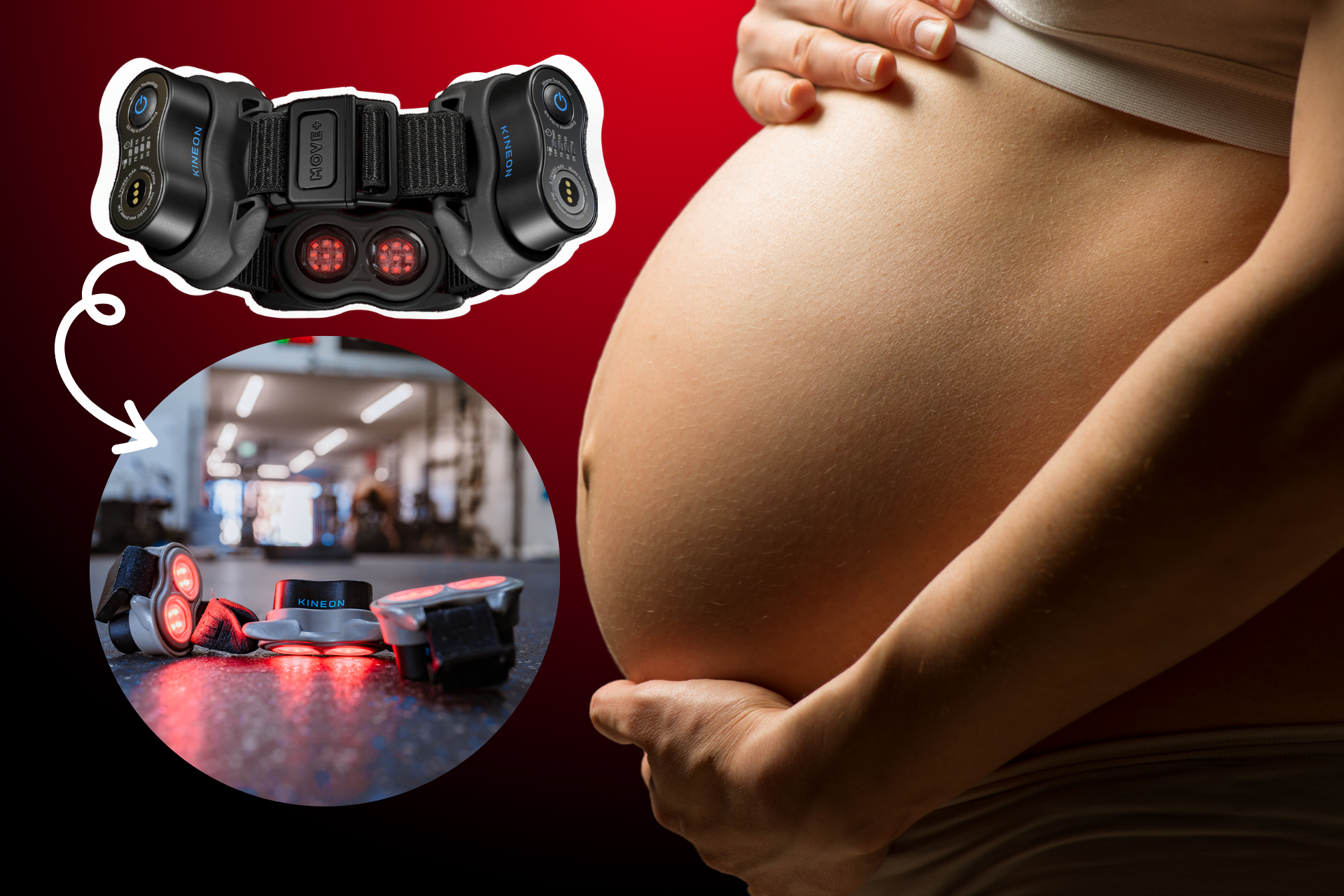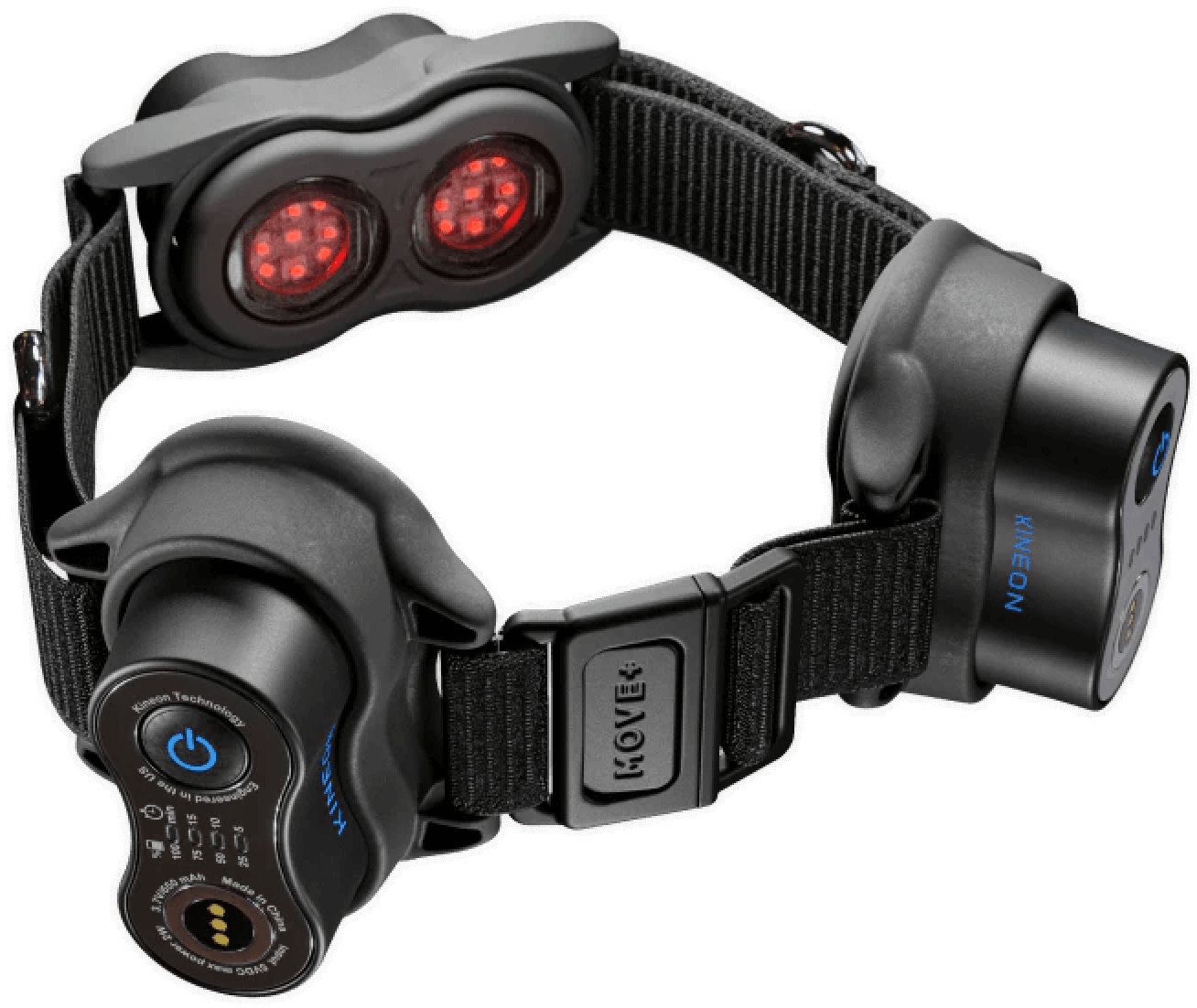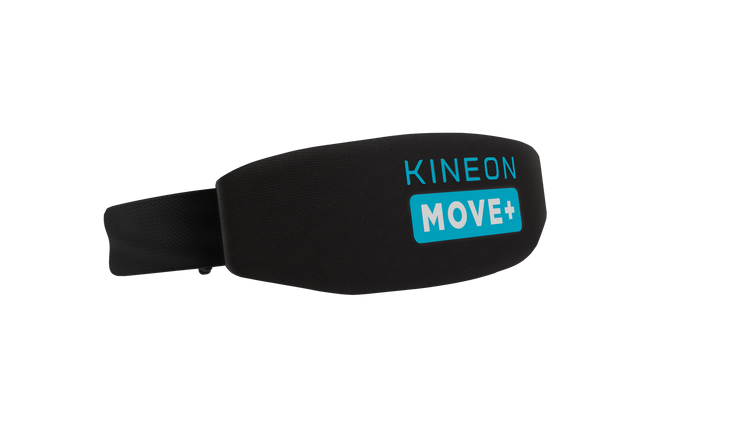The fertility journey can feel like a stressful roller coaster of emotions, with many aspects to consider at every corner.
In recent years, alternative therapies have gained attention for their potential to support reproductive health and enhance female fertility. Amongst those is the power of red light therapy.Red light can stimulate cellular function, promote circulation in reproductive organs, and alleviate stress during uncertain times.
It can be a great holistic treatment method and could be used as a complementary approach to fertility enhancement. We’re taking a look at the connection between red light therapy and female fertility and what this means for people embarking on this path.
How Red Light Therapy May Support Women’s Fertility

Red light therapy uses specific wavelengths of light to penetrate beneath the skin to stimulate various biological processes within the cells.
The wavelengths sit within the visible light spectrum and range between 620 nm to 750 nm. This part of the spectrum boasts longer wavelengths and lower energy compared to other light therapy modalities.
At the heart of it, reproduction requires a lot of cellular energy which is what red light aims to increase. When it comes to both IVF and natural pregnancies, implantation rates of the fertilized egg are thought to be related to mitochondrial function.
Red light works to boost the mitochondria which then promotes a healthier cellular activity - increasing the mitochondrial count and allowing it to successfully go through the natural stages like glycolysis, the citric acid cycle, and the electron transport chain.
Aside from the potential to help directly with fertility, red light is useful for pain relief too ,and is used by athletes and gym-goers to soothe painful muscles. When going through the pregnancy journey, this can take a significant toll on the body - for which red light therapy could be a handy way to heal ailments.
Benefits of Red Light Therapy for Fertility

Improved Blood Circulation to Reproductive Organs
Egg quality and embryo implantation are said to be improved when blood flow is increased to the uterus and the ovaries. This is because the flow will be oxygen and nutrient-rich - helping to make the area as healthy as possible.
Red light therapy has been shown to increase blood flow and circulation which enhances function.
Reduction of Inflammation in the Reproductive System
Red light therapy can provide relief from both acute and chronic pain, as well as reduce inflammation. While this is a normal bodily process in response to infection or injury, a prolonged issue with inflammation can cause adverse effects on fertility including disrupting menstrual cyclicity, implantation failure, endometriosis, and recurrent miscarriage.
This works by increasing blood flow and reducing inflammatory markers. It decreases the production of pro-inflammatory cytokines which are the molecules responsible for causing inflammation within the body.
Balancing Hormone Levels for Better Reproductive Health
When cells are under stress, this can contribute to the accumulation and release of harmful free radicals which can damage DNA. While the body can handle a certain amount of free radicals, the problem arises when there’s an imbalance.
Oxidative stress then occurs when there are too many free radicals and not enough ‘antioxidants’ to counteract them. Symptoms of oxidative stress include depression, fatigue, muscle weakness, joint pain, headaches, digestive issues, and anxiety.
One of the simplest ways to reduce this is through the use of red light therapy as it stimulates the production of new mitochondria. In turn, this helps to reduce the number of free radicals in our bodies and protects us from the damaging effects of oxidative stress.
With red light, your hormone levels can be more well-balanced to provide a healthy base for reproductive purposes.
Try a Red Light Therapy Device for Fertility Support Risk-Free

The Kineon MOVE+ Pro is a safe, non-invasive, enhanced light therapy device that is providing the next generation of laser light technology.
The device features two wavelengths - 660 nm deep red LED and 808 nm infrared lasers. This means you get the best of both worlds as LEDs help to improve circulation and treat inflammation, while laser diodes are useful for deeper tissue healing.
And best of all…we offer a 30-day at-home trial. You can try the MOVE+ Pro in the comfort of your home with a money-back guarantee if it’s not for you. Trial it out today.
How to Choose the Right Red Light Therapy Device for Fertility Support
Seeking out fertility support can often be synonymous with expensive and far-away clinic trips that then take a toll on your body. While it’s always recommended to continue advice from your medical provider, you can supplement your fertility focus with the use of a red light therapy device.
An at-home device enables you to take full control, meaning you can control when, where, and how often you utilize red light to reap the health care benefits.
This results in a more convenient and accessible way to access at-home light therapy, one that is more low cost too as it’s a simple one-off cost for the device.
When it comes to this holistic healing method, it’s important you choose the right one to provide the best fertility support.
Firstly, it’s imperative you trust the company and device. That should always be first and foremost.
To ascertain credentials, read through reviews and testimonials - as well as third-party articles - to see how people in the industry and general customers perceive the company.
Here at Kineon, our medical-grade laser device - called the MOVE+ Pro - is trusted by top health experts and professionals worldwide. Our site has numerous testimonials from incredible athletes, competitors, nutritionists, and doctors.
Secondly, it’s important to note and understand the wavelengths and tools the device utilizes.
The MOVE+ Pro has the best of both worlds with red light and infrared light therapy. Our device includes:
WAVELENGTH
8 x 660nm deep red LEDs per module
10 x 808nm Infrared lasers per module
OPTICAL POWER
Infrared lasers (class 1): 5mW per laser diode, 50mW per module
Deep red LEDs: 80mW per emission area
And third, consider the size and how the device is used. There’s no point in opting for a device that you can’t use. The MOVE+ Pro is portable and completely wireless. It also comes with an extender strap, so you can use it across any area of the body.
Tips for Using Red Light Therapy Devices for Fertility
While red light therapy is surprisingly easy to get started with, there are some tips that can help improve your experience of using the device.
We’ve done a blog post on the 13 Common Mistakes to Avoid with Red Light Therapy for beginners, but we’ve curated the list below for fertility.
1. Make Sure You’re Selecting the Right Settings
Now this one will depend on the device you purchase, but remember there may be several settings to toggle through before you can get started.
To crack this, read through the manual and guidance to help you know which setting it should be on and for how long.
If you’ve purchased a device from us, here at Kineon, we’ll never leave you guessing.
Everything you need to know will be in the guidance that comes with the device, but if you do have any questions, we have a great customer service team who are always happy to help whenever you need.
We do also have a Facebook group for customers which provides a community of people who are all on their individual journeys.
2. Use the Tool From the Correct Distance
There’s no point in going through the motions of red light, only to learn you’ve been applying it at too far a distance for it to be most effective.
Again, it depends on what device you buy as there isn’t a one-size-fits-all; it varies based on the type of tool, the intensity of the light, and the duration of the treatment.
As a general rule, most red light therapy devices work best at a distance of 6 to 12 inches from the skin but keep in mind that the optimal distance can also be influenced by skin types and conditions.
For example, people with sensitive skin may need to maintain a greater distance to prevent skin irritation.
Whereas people with darker skin tones might benefit from being slightly closer to the device to ensure adequate light absorption.
3. Consistency Is Key With Red Light Therapy
If you’re going to begin red light therapy, you must be consistent to see the best results.
The term ‘consistency is the key to success’ has never been truer than with this. But this doesn’t mean you have to dedicate hours of your day to the treatment. Instead, just 5-15 minutes per day will help you see results much quicker than an hour-long session every month.
4. Discuss Your Red Light Therapy Treatment Ahead of Time With Your Doctor
If you’re seeing a doctor or fertility specialist to help you on your way with conceiving, it’s always a good idea to speak with them before beginning any new treatment - especially so if you have any health conditions or are taking medications.
They will then be able to provide personalized advice and ensure it’s a suitable option that’s right for you.
5. Prepare Your Skin Properly
The beauty of red light therapy is that it can provide its benefits on the go, so if you are wearing clothing and sunscreen already - you’ll still feel the results.
However, the optimum way to experience the advantages of light is when the treatment is applied directly against the skin.
Clothing can be a bit of a barrier whereas immediate contact with the skin ensures the light isn’t scattered or absorbed by fabric, maximizing its absorption by the body’s tissues.
If you’d prefer to wear clothes when doing your red light therapy treatment, opt for light and breathable fabrics like cotton or linen. These allow for better penetration of the red light wavelengths.
Similarly, sunscreen can add another stage in between the light and your skin. While SPF is recommended to be worn every day, consider using red light therapy before applying any sunscreen to the body.
6. Stay Hydrated
Red light therapy can’t work miracles. You have to actively be helping your body, rather than hindering it.
Make sure you’re drinking plenty of water throughout the day, as hydration is crucial for optimal performance within your cells.
The Studies Behind Red Light Therapy and Fertility
Our team of professionals highlight two red light therapy and female fertility studies, including an overview, the key findings, study strengths and limitations. Plus, expert insights.
Study 1: Laser Irradiation Pretreatment Improves Endometrial Preparation of Frozen-Thawed Embryo Transfer in Recurrent Implantation Failure Patients
This study investigates how laser therapy can help patients struggling to conceive. They use laser irradiation, also known as photobiomodulation, to improve the endometrial tissue such that implantation is more likely to be successful. In this study, outcomes such as implantation rate and miscarriage rate are measured, along with gene expression measurements taken from endometrial biopsy.
Read the full research.
Key Findings About Fertility and Red Light Therapy:
- Photobiomodulation can be used to increase success of implantation in people suffering recurrent implantation failure.
- The patients who received photobiomodulation treatment had higher implantation rates, live birth rates, and lower miscarriage rates.
- The photobiomodulation group had increased gene expression of genes tied to embryo implantation
Study Strengths:
It’s always positive when an article explores practical and relatable outcomes, for example, the effect on miscarriage rate, successful implantation rate, and birth rate, among others.
Whilst these above are excellent outcomes, often, it’s not explained why this outcome is observed. This is why this study is particularly strong: the authors also looked at gene expression related to embryo implantation (and fertility in general). These genes are HOXA 10 (a transcription factor with downstream effects) and LIF (a cytokine that is involved in cell differentiation). The evaluation of these two different types of metrics allows for us to see what is happening and get a glimpse at why it is happening.
Study Limitations and Challenges:
One of the key limitations in this study is the lack of blinding.
The subjects got to choose whether they would like to be in the laser group or not receive treatment. Since the subjects knew whether they were getting treatment, this introduces the placebo effect.
Additionally, this potentially introduces unintended correlations.
It is not hard to imagine that someone’s willingness to try an experimental therapy could be tied to other actions not measured in this study.
Also, the sample size is fairly small, and not large enough for some of the results to be statistically significant. The author’s themselves address the limitations, “Patients who had experienced more failed cycles would have more motivation to choose the laser treatment, and therefore, it might interfere with the clinical results. Other limitations include the small sample size. Additional large prospective and randomized trials are required.” This sums it up!
Our Thoughts on Laser Irradiation Pretreatment Improves Endometrial Preparation of Frozen-Thawed Embryo Transfer in Recurrent Implantation Failure Patients
The first thing that stands out is the methodology for applying photobiomodulation in this study. They are using intravenous blood irradiation, so putting a fiber connected to a helium neon laser (628nm, 1-3mW) into a vein in the arm. This is a very different approach than what people usually think of when talking about photobiomodulation, and relies on non-local (the fancy word is abscopal) effects. This would be things like anti-inflammatory cytokines traveling through the bloodstream. Our best understanding is that while there certainly are non-local effects, the local effects are usually larger and more profound. With this in mind, it is very promising they were able to see a benefit, especially increases in gene expression. We would expect localized treatment, whether intravaginal (from within the vagina) or transcutaneous (through the skin), would outperform the outcomes found in this trial.
Methodology aside, we think this article is fantastic, as it explores treatment for female fertility, a field that has historically been under researched and talked about. They show improvements in multiple aspects, ranging from implantation rate, miscarriage rate, and even gene expression of genes involved with implantation. While this study has limitations, we hope this lays the groundwork for large scale clinical studies that can better explore these promising results.
Study 2: Personal Overview of the Application of LLLT in Severely Infertile Japanese Females.
This extended trial is a feat of perseverance by the author, Dr. Ohshiro, encapsulating his work using LLLT (low-level laser therapy) for women’s fertility in 701 patients. While absolutely not a clinical trial, the sheer number of individuals treated provides great preliminary data on what is possible with LLLT, also known as photobiomodulation. The laser light, 60mW at 830nm, was applied to the neck/upper vasculature, with the overarching goal of improving the rate of women’s fertility and ultimately childbirth.
Read the full research.
Key Findings About Fertility and Red Light Therapy:
- Women suffering from 4+ years of clinical infertility had a 22.7% pregnancy rate
- The use of photobiomodulation in conjunction with assisted reproductive technology (ART) was found to be much more successful in women over 30 than ART alone.
- A questionnaire given to some of the subjects found that many women were experiencing other benefits, such as less shoulder tension, improved sleeping habits, and overall vitality
Study Strengths:
This study stands out based on the massive number of individuals that received treatment, and the time period in which it was carried out (~16 years). It is also safe to assume that the patients received laser therapy with the same methodology as this entire study was conducted by the same doctor. There are fail/succeed binary metrics like pregnancy rate, which gives a good overall view of how successful this treatment was, and when combined with the questionnaire data that’s more qualitative, there’s a well rounded picture of how individuals after the study.
Study Limitations and Challenges:
This study is much more in line with an observational study than a clinical trial, and that brings along some key limitations. One major weakness is the lack of placebo, so all of the patients knew if they were receiving laser therapy or not. Additionally, the doctor also knew if the patients were receiving therapy, so there is no “blinding”. One other important weakness is the lack of direct measurement data. While it is of course great to measure pregnancy rate, the data available does not give great backup arguments for why this change is happening. This data could be recorded in the form of gene expression, endometrial lining thickness, presence of various hormones and cytokines, and other direct measurements of fertility.
Our thoughts on Personal Overview of the Application of LLLT in Severely Infertile Japanese Females
While this study is far from a clinical trial, it provides invaluable data on how photobiomodulation can improve fertility. While most of the individuals who became pregnant in this trial used ART in adjunct with PBM (153), some used PBM alone (34), which was a matter of personal choice. This suggests to us that PBM is likely to overall improve fertility, and of course ART (of which IVF is one example) is a great tool for those with fertility complications. We think that the positive results that could be seen with such a large number of patients is indicative of how well photobiomodulation can help with female fertility, and are excited to see future studies on the topic!
For more articles on red light therapy, pregnancy, and women’s health read:







